June/July 2025 Economic Impact: Preserving Legacy and Excellence: Germantown Charity Horse Show Showgrounds Improvements Initiative
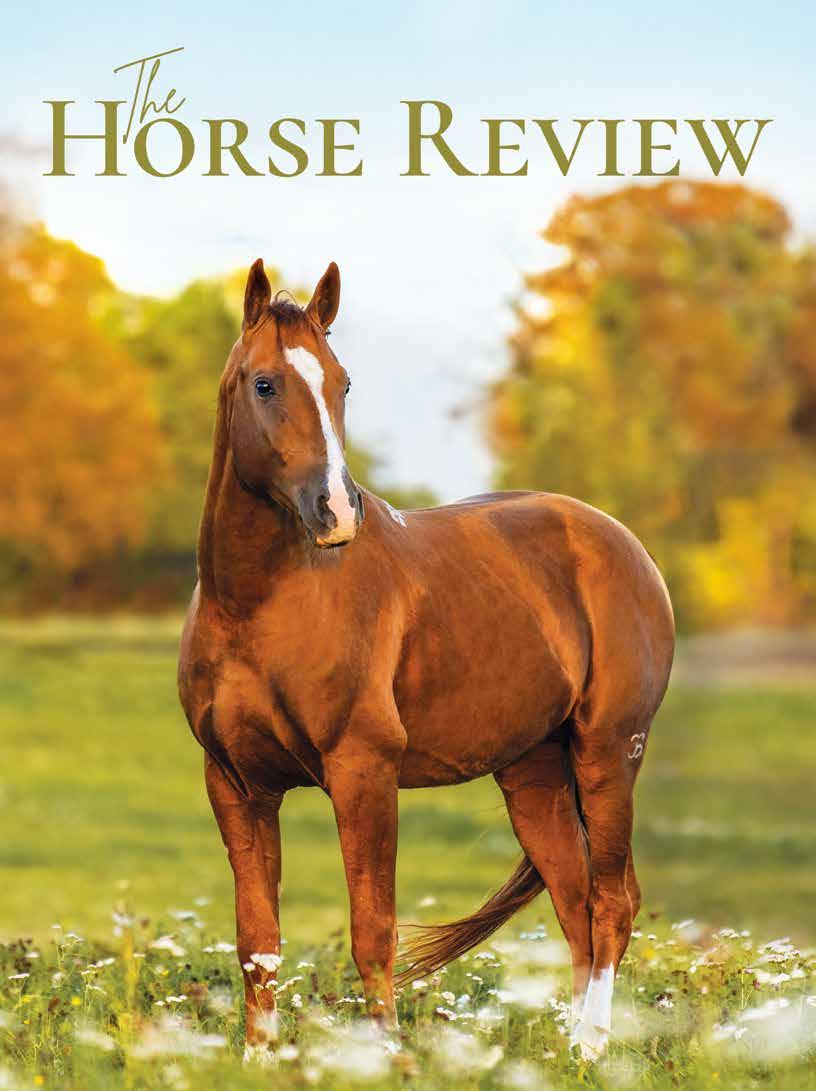

June/July 2025 Economic Impact: Preserving Legacy and Excellence: Germantown Charity Horse Show Showgrounds Improvements Initiative



PUBLISHER’S NOTE: Unlocking Opportunity and Growth in the World of Equine Education and Careers
NEWS: The Horse Review’s Sharlee Shumpert Shines as Runner Up in AHP’s Student Media Award
HORSE HEALTH: SUMMER HORSE CARE
A Guide to Horse Hydration
HORSE HEALTH: SUMMER HORSE CARE
Summer Skin Infections
HORSE HEALTH: SUMMER HORSE CARE
Sweet Itch: Itching to Solve a Problem
HORSE HEALTH: SUMMER HORSE CARE
Keeping Summer Stalls Cool
HORSE HEALTH: SUMMER HORSE CARE
Hauling Horses in the Heat
PEOPLE & HORSES: THE SUMMER RUN & ROOKIES
Look at Barrel Racing’s Fiercest Season & Newest Athletes
BEHIND THE BUSINESS: Equines and the Economy
GREENER PASTURES: MODERN BARN MANAGEMENT The Realities of Maintenance, Vendors and Hidden Costs
GREENER PASTURES: SUMMER PASTURE PESTS
GREENER PASTURES: SUMMER PASTURES: TURNOUT UNDER THE STARS
MARKETPLACE:







O’Grady Tara@thehorsereview.com 203-803-5113
and
Melissa Williams
Info@mshorsereview.com 901-279-4634 PO Box 451 | Nesbit, MS 38651
To submit articles, artwork and press releases please email to labbott@thehorsereview.com. We cannot guarantee work will be published, or return of manuscripts or artwork. Reproduction of editorial content, photographs or advertising is strictly prohibited without written permission of the publisher.

Summer brings transformation, not just for our horses, as their care routines shift with the rising temperatures, but for the entire equestrian community. This issue reminds me of why I first fell in love with this industry: the partnership between horse and human, the daily hands-on learning, and, perhaps most of all, the sense of limitless possibility.
This issue is all about opportunity. We’re taking a deep, honest look at the economic role of horses and horse shows in the United States, offering advice on keeping your horses healthy and comfortable through the summer months, and, most notably, debuting a guide to help young riders navigate college equestrian teams, equine majors, and career paths.
Summer horse care is fundamental yet often underestimated. Sweltering temperatures, biting insects, and the lure of green pastures present unique challenges for horse owners and caretakers alike. This month, we dedicate space to practical and educational articles on keeping horses hydrated, comfortable, and disease-free. When we prioritize health, we’re not just investing in the well-being of our equine partners; we’re supporting the entire foundation of the equestrian industry.
It’s easy to forget, sometimes, just how significant the horse industry’s economic impact is. Behind every blue ribbon and shining trophy, there are breeders, trainers, veterinarians, farriers, show managers, hospitality professionals, and countless small business owners whose livelihoods depend on a healthy, vibrant equine ecosystem. Horse shows, in particular, are economic engines that support local economies and provide opportunity for countless entrepreneurs.
But as we analyze the numbers and highlight the stories behind them, one message comes through loud and clear: The equine industry is not just a sport, it is a business. Its continued growth depends not only on riders and horses, but on well-run, ethical, and innovative equine businesses that drive value beyond the rail.
Finally, we’ve put together a guide for young riders navigating how horses can play a role in their lives after high school. Many grapple with questions like: Should I pursue riding in college? What if I don’t want to ride professionally but can’t imagine life without horses? How can I turn my passion for horses into a fulfilling and sustainable career?
Our guide to college equestrian sports and careers was created for these exact questions. We believe just as horses need steady, supportive guidance, so do our up-and-coming equestrian professionals. The pathway isn’t just about becoming a top-level rider. It’s about opening doors to careers in equine business, health, science, event management, marketing, journalism, product design, and so much more.
This industry offers a remarkable array of opportunities outside the saddle. Behind every event is an operations manager. Each branded halter or innovative piece of tack begins in a designer’s mind and reaches the marketplace through skilled marketing and supply-chain professionals. The research powering safer barns and innovative nutrition comes from academics and scientists who might never set foot in the show ring as an adult. Our veterinarians, behaviorists, therapists, communicators, managers, and entrepreneurs all share a love for horses and commitment to excellence. And we need every single one of them.
The equestrian world is often perceived as exclusive or difficult to enter without the “right” connections. But growth depends on opening doors, not guarding them. We thrive when we share knowledge, mentor newcomers, and in-
troduce young people to career options they may never have considered.
It’s time we stop thinking of this as an exclusive sport and industry. The truth is, equestrian life is one of the most diverse and dynamic business environments out there. For the industry to flourish, we must break down barriers and encourage everyone, from every background, to try their hand at equine business, management, research, innovation, or art and design.
If you are an experienced equestrian, I encourage you to make space at your table for new voices. Share your story, offer guidance, and be open-minded about where new talent can lead us. For readers just starting out, know that your passion and creativity are needed here. There is literally a career for every talent, from tech-savvy entrepreneurs to compassionate animal caregivers in the equine industry.
The purpose of this issue extends far beyond celebrating achievements and sharing stories. It’s about forging connections between equestrians and meaningful career paths, educating our community on the profound economic influence our sport and industry have on local businesses and communities, and, above all, prioritizing the welfare and wellbeing of the horse. By championing innovative ideas, responsible management, and unconventional career opportunities, we can amplify the economic and cultural impact of the equestrian industry.
This issue is driven by my belief that with mentorship, access, and a willingness to embrace new possibilities, a career in the equestrian world can become a thriving, lifelong journey for anyone bold enough to dream. There is a place for everyone here, at every level and in every field. It’s up to us to open the gate and welcome people in.
Lauren Abbott | Publisher
By Lauren Abbott
Each year, the American Horse Publications Equine Media Conference stands out as the leading gathering for professionals and aspiring writers dedicated to equine journalism. This year’s conference, held May 15-17 in Dallas, brought together publishers, editors, business owners, communication specialists and students from across the industry. For attendees, it offered invaluable educational sessions, dynamic networking and the much-anticipated AHP Equine Media Awards.
Since the early 1970s, AHP’s three-day annual conference has been the heart of equine journalism. The event is packed with workshops on journalism, visual storytelling, marketing, and professional development. More than a learning hub, it is also the epicenter for making connections that last a career. According to attendees, the AHP Conference is “the number one place in the equine industry to network with equine media professionals and AHP members”—a true “must-attend event” for anyone passionate about equine media.
This year, The Horse Review had an especially exciting reason to celebrate. Sharlee Shumpert, a dedicated writer for our publication, was one of just two media student finalists nationwide to receive a $1,000 travel award scholarship, enabling her to participate fully in the AHP Conference and Student Media Awards. Sharlee’s drive and commitment to the craft were recognized as she was ultimately named runner up in the 2025 Student Media Award com-
petition.
What makes Sharlee’s accomplishment even more noteworthy is her status as a freshman at Itawamba Community College in Fulton, Miss. Despite her early stage in both her academic and professional journeys, Sharlee continues to make a strong impression on the world of equine journalism.
Sharlee began contributing to The Horse Review in October, crafting stories with a special focus on rodeo culture. Through her unique voice, she brings the excitement, tradition, and community of rodeo to readers in every piece. Her curiosity and enthusiasm for the western way of life shine through in her writing, and her commitment to exploring both the sport and the stories behind it is unwavering.
At the conference, Sharlee was interviewed by the Student Award Committee, a formative experience that not only recognized her current talent but also provided a glimpse into the future of equine journalism. She took full advantage of her time in Dallas, connecting with top professionals from national publications and attending breakout sessions designed to inspire and evolve the next generation of writers.
From networking with established journalists to absorbing fresh ideas in educational workshops, Sharlee left Dallas more energized than ever about her path in this unique field. She returned with new tools, actionable insights, and relationships that will help guide her career for years to come.
It is with pride and excitement

that we continue to feature Sharlee’s stories in The Horse Review. Her achievements at the AHP Conference mark just the beginning of what promises to be an impactful career in equine journalism. We, at The Horse Review look forward to supporting Sharlee’s growth and celebrating her future accomplishments.
As she continues both her education and her writing career, Sharlee embodies the dedication, curiosity, and drive that define great equine media professionals. We are lucky to watch her evolution up close, and are eager to see how far her talents will take her as she digs deeper into rodeo and western culture.
Sharlee’s success is not just a personal milestone but a reflection of the energy and opportunity alive within the world of equine journalism. Events like the AHP Conference are vital for nurturing the next generation of writers. For The Horse Review and everyone championing new voices in the industry, moments like these are worth celebrating.
Congratulations, Sharlee, on your well-deserved recognition. Your future in equine journalism is bright, and we cannot wait to see the stories you share next.


By Sharlee Shumpert
When summer arrives, one of the greatest challenges for horse owners is equine hydration. As temperatures soar, ensuring our four-legged partners are drinking enough water becomes essential, but it’s often easier said than done. Some horses struggle with water intake both at home and on the road, while others only have issues when being hauled. With rising temperatures and the summer competition season in full swing, now is the perfect time to review some tips and tricks for keeping horses properly hydrated.
How can you tell if your horse is getting enough water? Physical signs of a hydrated horse include skin that “bounces back” when pinched, rather than staying slack. Gums that turn white when gently pressed but quickly return to pink. Urine that is yellow or clear. If your horse
shows these signs, they are likely well-hydrated. However, it’s always important to monitor for dehydration, especially in hot weather.
Dehydrated horses may show symptoms such as lethargy, reduced skin elasticity, loss of appetite, dry gums, high heart rates, and sunken eyes and flanks. The Redmond Equine Blog emphasizes that dehydration can kill a horse in just a few days. They recommend horses never go without water for more than three to five hours. Dehydration is a serious concern, and owners should be aware of its common causes.
Horses may refuse to drink water for various reasons. Stress, triggered by factors such as new locations, trailer hauling, or new pasture companions, is
a common cause. Temperature swings can also deter horses from drinking if their water becomes too warm or cold for their liking. Unclean or stale water can lead to refusal as well, so it’s crucial to provide fresh, clean water. Additionally, water that tastes or smells different from what they’re used to may also cause issues. When traveling, bringing a few jugs of “home” water can help ease this adjustment. Dehydration can also occur even when horses are drinking water. Excessive sweating, diarrhea, or medical issues such as ulcers can lead to fluid loss.
Fortunately, there are many strategies and products available to help promote hydration. Increase salt intake with salt licks, supplements, or by adding salt to feed. This naturally encourages thirst. Soak feed and hay in water to boost water intake. Keep water buckets and troughs at a consistent temperature, ideally between 45°F and 65°F. Use lighter-colored water buckets, as studies indicate horses prefer them over dark ones. When traveling, stop every two to three hours to offer water. Flavoring
water with natural additives, electrolytes, or sweeteners like apple juice can also encourage drinking. The Redmond Equine Blog suggests flavoring water a few days before a trip and continuing to use the same flavor at your destination to mask unfamiliar tastes and provide a comforting sense of home. Electrolyte supplements are another excellent way to combat dehydration, as they replace lost nutrients. Meanwhile, salt supplements help stimulate thirst. If a horse shows signs of chronic or severe dehydration, contact a veterinarian immediately.
Whether you’re dealing with a stubborn horse, a sick horse, or just one struggling with summer heat, there are plenty of methods to keep your equine companion hydrated. The saying goes, “You can lead a horse to water, but you can’t make him drink.” Then again, with the right tricks, maybe you can!
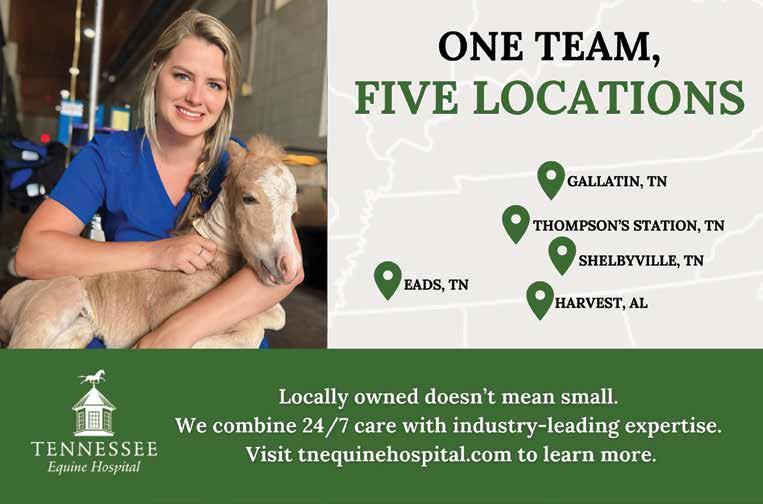

By Sharlee Shumpert
No horse owner wants to see it: slow-healing, pus-filled wounds on a horse’s legs, lips or eyes that cause itching and rubbing in the summer heat. Summer skin infections are no joke, and identifying the specific infection is crucial for proper treatment. Two infections that are often confused are pythiosis and habronemiasis. Pythiosis is commonly referred to as “swamp cancer,” while habronemiasis is typically called “summer sores.” Both conditions result in non-healing sores, but their causes, treatments and prognoses are markedly different. Knowing how to differentiate, prevent and treat these two conditions can help horse owners pre-
pare for whatever the summer season brings.
Summer sores are caused by stomach worms, or nematodes. There are two genera of nematodes that infect horses: Habronema and Draschia. As adults, these worms live in horses’ stomachs, and their eggs are deposited into the environment through feces. Fly maggots ingest the nematode larvae while feeding on horse manure. Once the flies mature, they carry the nematodes back to the horses, typically depositing them around the horses’ lips. Normally, the horses lick up the nematodes and
ingest them, continuing the life cycle. However, when the nematodes enter a wound, cut or abrasion—usually near the lips, eyes or sheath—and cannot be consumed, the worms are unable to complete their life cycle. This triggers an inflammatory reaction, resulting in a quickly forming, painful sore.
The defining characteristic of summer sores is the presence of sulfur granules, which Texas A&M’s School of Veterinary Medicine describes as “small, yellow, and hard particles within the granulation tissue of the ulcerated area.” These granules help veterinarians identify habronemiasis as the cause of the sores. Biopsies, which may reveal nematode larvae, are also used for diagnosis and to ensure the sores are not caused by cancer.
Once habronemiasis is diagnosed, treatment typically involves a veterinarian cleaning and debriding the wound (removing the nematodes), followed by administration of steroids and ivermectin. In less severe cases, debriding may not be necessary.
Deworming and fly management play crucial roles in the treatment process. Eliminating and preventing the pests responsible for summer sores is just as important as treating the infected wounds.
The name swamp cancer, while sometimes used for other diseases, most often refers to the dangerous skin condition known scientifically as pythiosis. It can affect all equids as well as dogs, cats, and people. This rare but serious disease results from infection by Pythium insidiosum, an organism described as “fungus-like” without being a true fungus. It is aquatic, and horses contract it when they come in contact with infected water while having a break in their skin, especially on their legs. Pythiosis initially appears as an inflamed, small area resembling a bug bite or puncture wound, but it rapidly develops into a large, tumor-like mound—this is a telltale sign of pythiosis. As the disease progresses, it can cause the horse’s skin to flake off, and the resulting sores are much larger than those caused by habronemiasis.
Pythiosis has a much graver prognosis than habronemiasis and is more difficult to treat. While it can be confused with summer sores, swamp cancer’s rapid progression and high fatality rate set it apart. The “tumors” that result from pythiosis
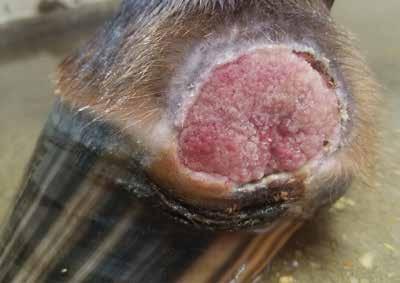
Left front limb of a horse diagnosed with pythiosis treated only with essential oils. Photo credit: Dr. Neely Walker, Ph.D., Assistant Professor (Equine Specialist), School of Animal Sciences | LSU
are known as “kunkers.” Besides its characteristic kunkers, pythiosis can also be diagnosed via biopsy. Not much is known about this disease, but research is increasing and has yielded a vaccine. This vaccine is a treatment rather than a preventative and is administered through three shots. Chronically infected horses do not respond as well to the vaccine as horses who have been infected for less than 60 days. Catching pythiosis early is key. According to Sharon Klinger’s article “Equine Pythiosis: An Overview,” the vaccine’s success rate is 75%, even for chronic cases. In some cases, treatment also involves surgery. In general, horses are more likely to develop habronemiasis than contract pythiosis, but if a horse’s sores worsen significantly over a short period despite treatment for habronemiasis, swamp cancer should be considered. In either case, a veterinarian should be called to examine any large, persistent sore. While summertime skin infections cannot be entirely prevented, vigilant and informed owners can help their equine companions have a much healthier season by knowing the signs of these two conditions.
Section Sponsored By:



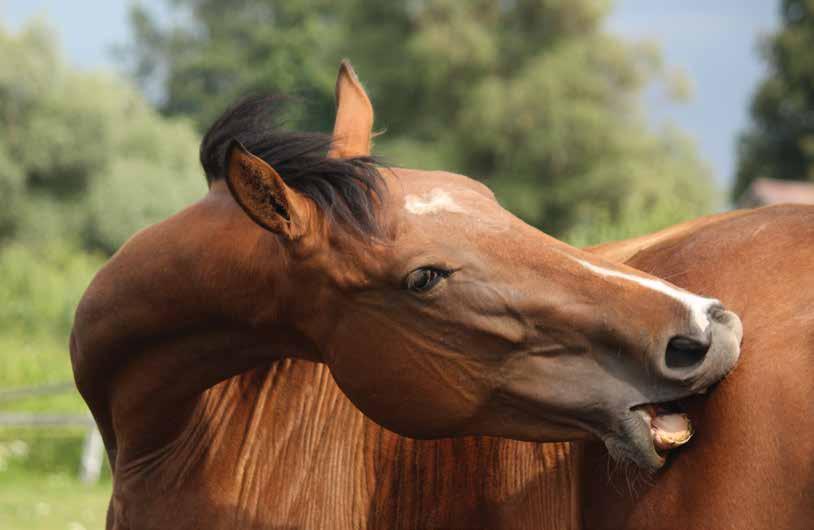
By Kyla Szemplinski, MS, UT TSU Shelby County Extension
Summertime for horse owners brings plenty of benefits, but it also comes with an unwelcome visitor: summer bugs. These bugs bring annoyance, diseases and intense itching, and lots of it. One itch your horses are begging to be scratched is sweet itch. Out of all the allergies, sweet itch is one of the most common. However, with proper management, there are steps owners can take to mitigate exposure to insects and alleviate symptoms in affected horses.
Sweet itch is a common, seasonal skin condition caused by an allergic reaction to insect bites. It is also known as summer itch, equine insect bite hypersensitivity, summer seasonal recurrent dermatitis or Queensland itch. While the names may sound similar, sweet itch in horses and sweat itch in humans are distinct conditions with different causes and implications.
Sweet itch in horses results in intense itching and irritation primarily along the mane, tail, and belly. On the other hand, human sweat itch, often called heat rash or miliaria, is caused by the blockage of sweat glands, leading to red, itchy bumps on the skin, typically in areas prone to sweating. Unlike sweet itch, which is seasonal and insect-driven, sweat itch is related to environmental factors like heat and perspiration. Understanding these differences highlights the need for tailored approaches to prevention and treatment for each condition. Symptoms of sweet itch include vigorous tail swishing, excessive mutual grooming with pasture mates, excessive rolling, and scratching at the mane with hind hooves. Itching is typically focused on the neck, mane and tail, but in severe cases, affected horses will rub and bite their skin anywhere they can reach. Other symptoms include sparse coat hair with dandruff. These symptoms are most commonly seen
from May to October, though the onset of symptoms can vary by location. In severe cases, sweet itch can result in sores and lesions that bleed or swell, leading to secondary infections.
Sweet itch is caused by an allergic reaction to biting insects in the Culicoides genus, which includes more than 1,000 species, such as black flies and biting gnats. These insects are commonly known as midges. After a midge bites a horse, salivary proteins are transferred to the horse’s skin. The skin cells release immunity and inflammatory response cells, activating an allergic reaction. This reaction causes cells to release mediators such as histamine and prostaglandins, and it is the histamine that leads to itchiness in the skin.
Treatment for sweet itch typically focuses on providing relief from itching and ensuring the horse is as comfortable as possible. Treatment options include topical ointments or systemic medications. Some horse owners have also tried essential oil extracts from plants such as lemongrass, peppermint, and camphor, which may offer immune support, antihistamine, anti-itch, anti-inflammatory and insect repellent benefits. While essential oils do not cure sweet itch, they may be an effective management strategy for affected horses.
Managing and Preventing Sweet Itch Prevention and proper management are the best
courses of action for dealing with sweet itch. Strategies include using fly masks, sheets and mesh leg coverings; cleaning out pasture shelters, stalls, and turnout areas of manure to reduce the number of midges that thrive around droppings; and applying insect repellents and ointments. Avoid turning horses out in marshy areas, soaked fields or near water sources, as these environments attract midges.
Stabling horses at night can also help since Culicoides are more active during this time. Cleaning water troughs on a weekly basis and using industrial fans in barn aisles, or even individual stall fans, can also reduce exposure to biting insects.
Failing to act against sweet itch will only make the condition worse and lead to painful lesions and sores that can develop serious infections. These infections can result in significant discomfort for the horse and more expensive veterinary bills for the owner.
It is heartbreaking for any horse owner to watch their horse suffer from sweet itch. Ignoring the condition can lead to more serious and costly outcomes. While there is no single guaranteed solution to stop sweet itch entirely, trial and error can help determine the right combination of management and treatment for your horse. With proper prevention, management and treatment, the effects of sweet itch can be minimized and your horse can live more comfortably.
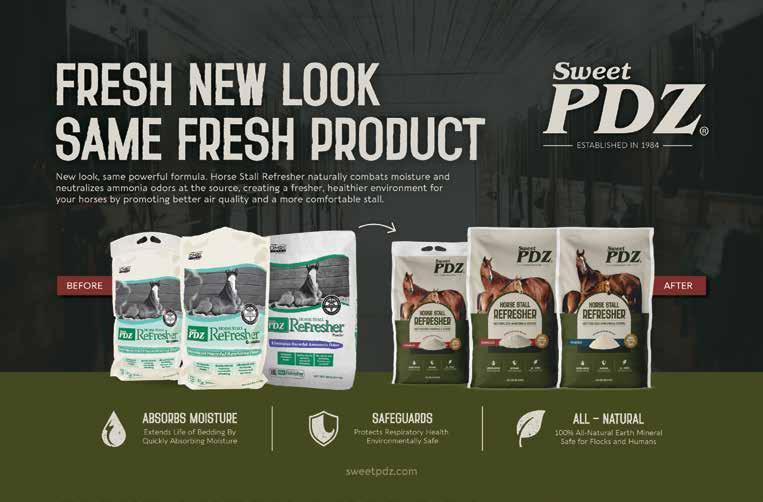

By Sharlee Shumpert
When the summer sun is blazing and humidity is high, keeping a barn cool and comfortable can feel like an impossible task. But horses still need to be stalled during the summer, so what can be done to help them beat the heat?
Section Sponsored By:

Stuffy, heavy air caused by humidity is one of the main challenges horse owners face when trying to cool a barn. One simple solution is to install fans to keep air circulating throughout the space. Box fans are the most common choice, but exhaust fans, misting fans, circulation fans, and even ceiling fans (if space allows) are also effective. Using fans properly is key to achieving the desired effect. Fan size, location, and barn temperature all play a role. According to the article “Keeping Your (Horses) Cool - Part 1” posted on
EnlightenedEquine.com, fans must replace air, not just circulate it, to be effective. The article explains, “... we need to think about making the barn more of a closed box, with a fan or fans mounted through the wall of the box to pull the warmer inside air out of the barn and, thereby, draw in cooler air through openings [windows] in our box.”
Additionally, the article mentions that fans should only be used when the outside temperature is lower than the barn’s interior temperature. If fans are turned on when it’s hotter outside, they can unintentionally heat the barn instead of cooling it.
Another important step is to open all windows, doors, and vents to allow maximum access to fresh air. This also helps fans work more efficiently, as cooler air can enter and replace the warm air being extracted. As always, horse owners must place fans in safe locations and remain aware of the potential fire hazards fans can pose if not handled properly.
Misting systems can be an excellent way to cool down a barn, but proper airflow is essential when

using them. Misting systems create moisture, and if that moisture isn’t removed by air currents, it can dampen the air. While moving mist across a horse’s skin is a great way to cool them down, lingering moisture in the atmosphere can increase the risk of infection. High-humidity environments may not benefit as much from misting systems because the air is already saturated and cannot hold additional water. Both permanent misting systems and portable misting fans are available for use.
Proper hydration is another critical factor in keeping horses cool during summer. Horses should always have access to clean, cool drinking water. Lighter-colored buckets are preferable to darker ones, as they keep water cooler for longer. Baths are also helpful, but it’s important to check the temperature of the water before hosing down a horse. Hoses left in the sun can heat the water inside, potentially causing burns.
By paying attention to airflow, providing adequate water, and using misting systems when appropriate, barn owners can help their equine friends stay comfortable even in the heat of summer.
This tip might seem obvious, but ensuring your stalls are well-shaded is vital to keeping them cool. If the stalls are not covered by a roof, installing overhangs where possible or even trees can help shield horses from the sun, and these strategies also apply to pastures and turnouts. Another great option is installing special materials to reflect sunlight. Reflective insulation is one especially helpful tool owners can implement in their barns. The article “Reflective Insulation: Everything You Need to Know” from insulation4less.com says, “Reflective insulation, also known as foil insulation, is a material with reflective facing. In most cases, this is aluminum foil or aluminized polyester. This type of insulation reflects heat by up to 95% and prevents it from transferring to the other side of its panel.” Other similar products with reflective properties include radiant barriers, reflective roofing, reflective coatings, and solar reflective paints. Radiant barriers are an extra good choice for metal barns.
Even horses stalled in barns with proper cooling systems may still experience overheating and heatstroke. Owners should be vigilant for symptoms such as panting, high body temperatures, dehydration, irregular or rapid heartbeats, and excessive sweating. Exercise schedules may need to be adjusted due to summer weather, and regular water checks are crucial. Frequent baths may also be necessary.
If a horse shows signs of overheating, a veterinarian should be contacted immediately. If heatstroke is suspected, the horse should receive medical attention as soon as possible. Owners should have a regular veterinarian for their horses and know the location of the nearest emergency vet or veterinary school in case of a crisis.
Stalls in summer can be uncomfortable for both horses and humans, but with the right equipment and a few adjustments, they can be much more manageable. Whatever your summer plan is, stay cool and safe this season!
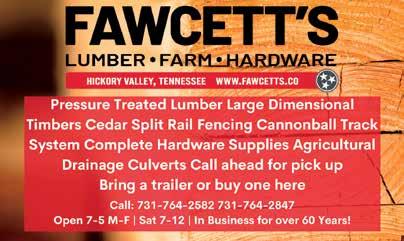
By Kyla Szemplinski, MS, UT TSU Shelby County Extension
It’s officially the season for all things equestrian— whether you’re hitting the show ring, enjoying trail rides, or gathering for exciting horseback events. This time of year is full of camaraderie, triumphs, and fun with both humans and horses. However, rising temperatures during the summer months can make traveling with horses a challenge. Transporting horses in hot weather significantly raises the risk of heat stress, potentially leading to severe conditions like heat exhaustion, colic, or even a collapse inside the trailer. To prevent these devastating situations, it’s essential to plan ahead to protect both your horses and yourself. Before your horse even steps onto the trailer, ensure they are fully hydrated. Provide free-choice water in the hours leading up to travel. On the

morning of the trip, boost hydration by offering an electrolyte supplement in gel, paste, or powder form. Another great option is mixing water into your horse’s grain to create a mash or soup. If you are traveling out of town stop every four hours to offer your horse fresh water. If your horse is a picky drinker, consider bringing large, multi-gallon containers filled with water from your barn. To help them adjust to unfamiliar water when your supply runs low, try mixing in Gatorade powder to mask the taste and encourage them to drink. Provide your horses with adequate airflow during travel by opening windows and vents, ensuring the bars remain in place to prevent them from sticking their heads out. Before setting
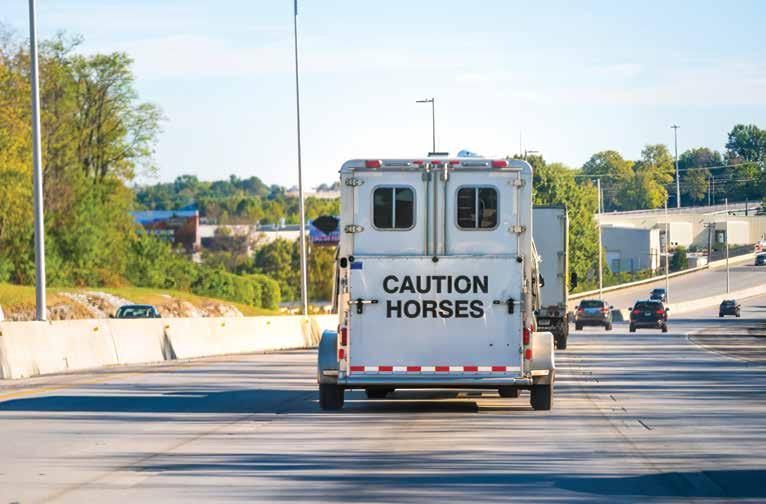
off, review your route for potential traffic delays to avoid turning the trailer into an overheated environment during prolonged stops. Pay attention to temperature and humidity conditions. Avoid traveling when the combined temperature and humidity exceed 90 degrees Fahrenheit. Plan to travel early in the morning or late in the evening when it’s cooler, and minimize the time spent idling at gas stations to refuel. When the trailer isn’t moving, airflow is reduced, and temperatures inside can rise by up to 25 degrees. Every time you stop, check on your horses and offer them water.
Keeping an eye on your horses while traveling can be tough, but a trailer camera can make all the difference. With this handy tool, you can monitor your horses from the comfort of the cab, ensuring their safety and your peace of mind.
Be alert for indicators of overheating or heat stress, such as:
• Excessive sweating
• Flared nostrils
• Increased respiratory rate
• Rectal temperature exceeding 102 degrees Fahrenheit
If your horse stops sweating, they may be in the advanced stages of heat distress. On the road, you can help cool down your horse by running cool water over their legs, head, neck, and chest, and by using a fan and moving the horse into a shaded area. Consider installing a thermometer in your trailer
to monitor conditions. If your horse doesn’t improve while cooling down, contact a local veterinarian for assistance. Early intervention is more effective and less costly than addressing severe heat distress.
Reaching your destination doesn’t mean your horse is entirely out of danger. Horses need time to recover from the trip, especially if the destination is hotter or more humid than home. Plan for at least one day of rest after a six- to 12-hour haul, or two to three days for trips longer than 12 hours. This recovery period allows your horse to adjust to the new environment. During post-travel recovery, it’s important to provide supportive care to ensure the horse’s well-being. Offer electrolytes in gel, paste, or powder form to help replenish lost nutrients. Ensure access to free-choice, cool, clean water to keep them hydrated. Soak their feed into a mash or soup for easier consumption and digestion. Additionally, keep the horse in a shaded area and use fans in stalls to maintain a comfortable environment.
Traveling with horses during the hot summer months can be a challenging task for both the animals and their handlers. However, with thoughtful preparation, summertime trailering can be made safe and comfortable for everyone involved. It’s essential to anticipate and address the risks of heat stress by planning ahead and providing the necessary care to your horses before, during, and after the journey. This ensures their health and well-being throughout the trip.

By Sharlee Shumpert
For WPRA and PRCA contestants, summertime offers the biggest opportunities of the rodeo season. With major events like Cheyenne Frontier Days, Calgary Stampede, Reno Rodeo and California Rodeo Salinas on the schedule, those aiming for the National Finals Rodeo in Las Vegas must capitalize on these big paydays, even if it means braving the scorching heat. The “summer run” draws out veteran competitors while also attracting new athletes vying for the coveted Rookie of the Year title.
The 2024 WPRA Rookie of the Year in barrel racing, Océane Veilleux, knows the importance of making summer rodeos count. Meanwhile, Emma Kate Parr, a rising star in the race for the 2025 rookie title, is entering the first “summer run” of her barrel racing career. How are these two cowgirls tackling the sport’s most competitive season?
Veilleux, originally from Saint-Alfred, Quebec, now competes on the Texas A&M Commerce college rodeo team. Her journey
to becoming Rookie of the Year began as a trail-riding little girl watching barrel races at her hometown rodeo. Her parents bought her a one-eyed pony, which was eventually replaced by her trusted horse Charlotte. Veilleux began traveling to Texas for futurities and soon discovered college rodeo. She applied to join TAMUC’s rodeo team and pursued her dream.
“As soon as I turned 18, I decided to follow my dream of rodeoing,” Veilleux said. “I didn’t have much experience in the rodeo world, but I’m grateful for what college rodeo taught me during the year prior to my first pro rodeo.”
Veilleux said bringing home her rookie title took perseverance. As a rookie, she didn’t know what to expect, and she quickly learned that pro rodeos are unlike other events in the sport. Adjusting to the larger American arenas took time, but she powered through and finished the 2024 season with $47,370.43 in earnings.
“The summer run is crucial,” Veilleux said.

“There are so many rodeos during the summer that it’s time to catch up and make money.”
After last year, Veilleux said she learned the importance of running her horses on larger patterns before hitting the summer rodeos. After competing in smaller indoor arenas during the winter, she and her horses needed to adjust their timing for the bigger outdoor patterns. This year, she plans to rely on her signature palomino gelding, Ice Cream (Heavens Guy), who is coming back from an injury he sustained at San Antonio. Veilleux’s favorite summer rodeo is in Salt Lake City, Utah.
When asked what advice she would give aspiring rookies, Veilleux recommends thoughtfully selecting which rodeos to attend and not overrunning your horse. She stresses the importance of having a good support team and encourages moving on from bad runs quickly. She says, “Just make every run count, and if it goes bad, then move on to the next ... keep pushing ‘til the end because you only have one rookie year. Learn from every experience and have so much fun.”
Emma Kate Parr, a barrel racer from Greensboro, Alabama, is currently fighting for the 2025 WPRA rookie title. She began riding as a child and took barrel lessons from her neighbor, which eventually led to her meeting Chuck and Linda Gail Stewart. Parr credits the Stewarts as being a major part of her success. When it comes to the competitive rookie race, she says, “I try to not pay much attention to the standings and just go make every run count.”
The WPRA season is far from over, but Parr has al-

ready made significant strides toward the rookie title as summer approaches. In April, she was crowned champion barrel racer at the 2025 Resistol Rookie Roundup at Fort Worth’s famous Cowtown Coliseum, with the help of her powerful gray gelding, DG Excuse My French.
Parr is well aware of how pivotal the “summer run” will be for her rookie year, and she knows the road ahead will be filled with challenges. Like Océane, she has been running her horses on patterns with varying sizes and setups to prepare them for the diverse arenas they’ll encounter on the rodeo trail. She plans to compete on her horses Pierre (DG Excuse My French), Piper (Pipe Down Compromise), Smuggs (Smugglin Doubles), and Chloe (Hooked on Famous). When asked which summer rodeo she is most excited about, Parr says her sights are set on Calgary. She has already earned more than $20,000 this season, and the monumental summer rodeos could propel her toward the rookie title.
With so much prize money available before the WPRA season ends, the next barrel racing rookie champion remains uncertain. However, one thing is clear: she is most likely packing her trailer, loading her horses, and hitting the road to make the most of rodeo’s toughest and richest season. The journey to Las Vegas takes grit and dedication—qualities that will certainly be tested under the summer sun as contestants travel from Florida to Wyoming. Rodeo is a year-round affair, and whether you’re a fan or a competitor, there’s much to look forward to as the summer run gets underway.


By Lauren Abbott | Photos Courtesy of STABLE Pro
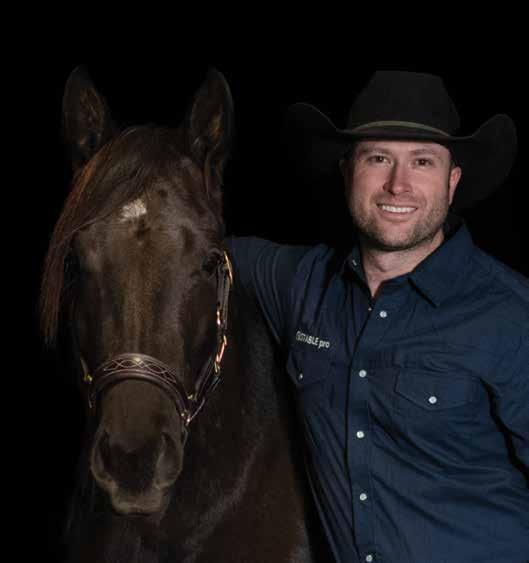
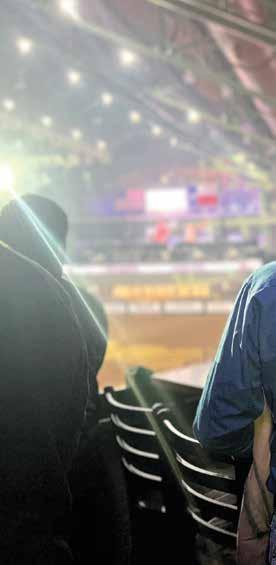
When James Dexter sat in a barn at the prestigious Run for a Million in August 2023, he wasn’t just admiring the worldclass horses and dedicated trainers. He noticed something troubling. Amidst the thrill of the competition, trainers and their spouses were glued to laptops trying to keep up with billing, invoicing every free moment they had in between caring and training their horses.
For someone whose passion for horses runs deep, Dexter saw an opportunity. What if there was a better way to manage the financial and operational side of running a training business? What if trainers could spend more time working with horses and less time navigating spreadsheets? With this vision, STABLE Pro, a innovative equine invoicing and management platform, was born.
The Birth of STABLE Pro
“On the six-hour drive home that day,” Dexter recalls, “I couldn’t stop brainstorming. Walls, my bed, everything was eventually covered in note cards, with string and arrows like I was tracking serial killers. ”
That investigative impulse paid off. Through ex-

tensive research—including interviews with trainers and close observation of how they managed their businesses—Dexter identified the glaring inefficiencies in the equine industry. By the end of 2023, he had designed the framework for what would become STABLE Pro.
At first, the program focused on billing, but Dexter quickly realized that invoicing was just scratching the surface. With the help of his advisor Christopher Skinner, STABLE Pro started developing far more robust capabilities, transforming how horse trainers operate—from task management to client communication, and beyond.
Bridging the Gap in the Equine Industry
The equine industry, so steeped in tradition, often lags when it comes to adopting innovative operational tools. This is where STABLE Pro shines. “Initially, billing was the blatant gap,” James stated. “We quickly learned that, although invoicing was our bread and butter, trainers wanted and needed more.”
Today, STABLE Pro is a comprehensive software solution offering a wealth of features. Trainers can automate invoices, manage tasks, set up lessons and clinics, share files, schedule trips, and track horse training progress. Their clients benefit from secure

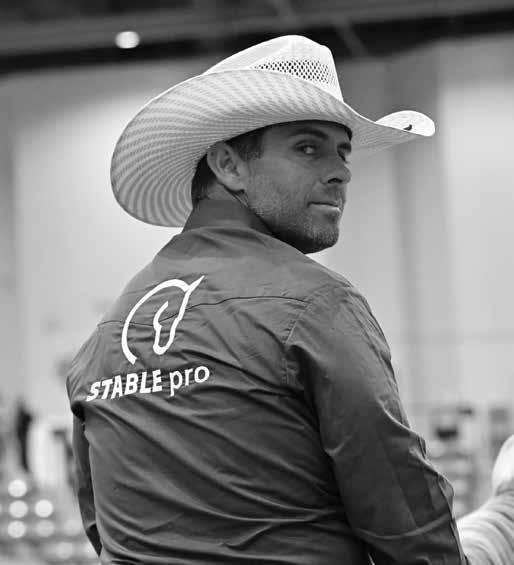
payment options, training updates, and calendar coordination. STABLE Pro also ensures that trainers can maintain professionalism while simplifying dayto-day operations.
Dexter strongly believes in using technology not to replace the hands-on work trainers do but to make it more efficient. “It’s about freeing up time so trainers can focus on the horses and less on the paperwork,” he says.
The early stages of STABLE Pro’s development weren’t easy. Dexter didn’t have a tech background; he grew up on a ranch, worked as a pharmacist, and spent his free time caring for and breeding horses. “I had no clue what I was doing,” he admits.”I had a desire to learn and build. All I had to do was discover something that needed to be learned and built.”
But Dexter wasn’t deterred by these obstacles. Fueled by a commitment to better the lives of people in the equine industry, he spent more than a year pouring his energy into STABLE Pro. His workdays began at 4 a.m. and lasted until 11 p.m., seven days a week.
Dexter credits the advice of mentors and extensive input from trainers for helping STABLE Pro overcome these initial hurdles. “Every feature of the program is shaped by their feedback,” he said. “From day one,

this has been a collaboration with the people we’re serving.”
STABLE Pro is more than just a tool; it’s a reflection of Dexter’s values and deep-rooted connection to the horse world. “The horses I cared for growing up gave me far more than I could have imagined,” he says. “They kept me grounded and brought joy to every day.”
That sense of gratitude has shaped STABLE Pro’s mission. At its heart lies the principle of stewardship, a commitment to creating positive change for trainers, clients, and the equine industry as a whole. Whether it’s designing youth educational programs or partnering with major organizations like the American Quarter Horse Association (AQHA), Dexter sees STABLE Pro as part of a larger movement to grow and protect the future of horsemanship.
When asked about his proudest moment, Dexter recalls hearing from one of his parents’ old friends who admired the impact STABLE Pro had made. “Seeing my parents feel proud of what we’ve built— that’s been the most rewarding part of the entire process.”

STABLE Pro users rave about the platform’s ability to streamline their operations, citing significant time savings and increased professionalism in their programs.
Amy Buckley of Buckley Farms notes, “STABLE Pro has not only simplified our billing but also saved us hundreds of dollars a month in transaction fees. Our clients love the flexible payment options, and the customer support from James and his team is fantastic.”
Thomas Sangster from TNT Ranch has also seen a transformation in his daily operation. “The features allow me to be organized down to the smallest tasks, making my life so much easier. The billing process is a breeze, and I no longer need to schedule calls with clients to update them on training progress.”
For Gracie Torres of Cavvietta Quarter Horse & Cattle Co., STABLE Pro has become indispensable. “It’s a game changer for me, my manager, and our clients! Everything runs automatically now, taking a load off our shoulders.”
Looking ahead, Dexter is committed to expanding STABLE Pro’s capabilities. He envisions a future where the platform not only serves trainers but also supports associations, event organizers, and the next
generation of horsemen.
“Whether it’s registering horses for shows or submitting paperwork to associations, we want STABLE Pro to be the central hub where the entire horse world connects and operates,” he says.
This commitment to innovation is underpinned by Dexter’s personal connection to the industry and his desire to give back to the community that has shaped his life. “Horses have given me so much. STABLE Pro is my way of giving something meaningful in return.”
STABLE Pro is helping equine businesses manage their day-to-day operations more efficiently, allowing trainers and clients to focus on their shared passion for horses. Designed with user-friendliness and collaboration in mind, the platform offers tools aimed at simplifying equine management tasks.
Led by Dexter, the team behind STABLE Pro is working to address common challenges faced by the equine industry. By leveraging technology, they aim to create a streamlined experience for trainers and clients alike, reflecting the industry’s shift towards more modern, practical solutions for business management.

By Sharlee Shumpert

The horse industry has experienced significant economic growth over the last two decades. With more shows to attend, more prize money, and increased media attention, the equine industry is thriving. But how are equine activities impacting the broader U.S. economy?
According to the 2023 Economic Impact Study of the U.S. Horse Industry conducted by the American Horse Council Foundation, there are about 6.7 million horses in the United States. The revenue generated by caring for and showing these animals totals more than $74 billion. The horse industry directly produces 1.3 million jobs, while the total number of jobs created reaches 2.2 million, thanks to what the study refers to as a “ripple effect.” Most impressively, the study reports that “adding these ripple effects... results in an estimate of the total contribution of the horse industry to the U.S. economy of $177 billion.” Clearly, this is a valuable industry.
To break these numbers down further, let’s look at some major events across different equestrian disciplines.
There is no better place to start than the iconic Kentucky Derby. An article from the Courier Journal and Louisville Tourism predicted a staggering $441 million in economic impact from the 2025 Kentucky Oaks and Kentucky Derby races. These races continue to increase their economic contribution each year, and with Churchill Downs Racetrack investing in a $920 million expansion plan, according to the Courier Journal, the Kentucky Derby is on track to keep breaking records.
What about smaller events? The National Little Britches Finals at the Lazy E Arena in Guthrie, Oklahoma, is a weeklong junior rodeo association event that has been held there since 2016. In 2021, the event hosted 1,613 contestants, according to LazyE.com. Kendra Santos, writing for the website, stated that the Lazy E Arena estimates the annual economic impact of the event at nearly $20 million.
The Devon Horse Show & Country Fair, which just hosted its 2025 event, is described on its website as “the oldest and largest outdoor multi-breed competition in the United States.” Held in Devon, Pennsylvania, the event showcases numerous equestrian disciplines, including hunters, jumpers, Friesians, roadsters, Saddlebreds, carriage pleasure drive, coaching, four Hackney pony divisions, and other driving competitions. With an estimated 125,000 spectators, the event delivers an $18 million local economic impact, according to DevonHorseShow.net.
The economic influence of the equine industry, from massive events like the Kentucky Derby to smaller-scale competitions such as the National Little Britches Finals, highlights its importance in the U.S. economy. As the in-
dustry continues to grow, its contributions will undoubtedly expand as well.
The National Finals Rodeo, held in Las Vegas, Nevada, has been around since 1959 and drew 170,045 spectators in 2024, according to NFRExperience.com. The NFR consists of 10 rounds, and the Las Vegas Convention and Visitors Authority reports this premier rodeo generates an economic impact of $200 million. Meanwhile, the 2024 Houston Livestock Show and Rodeo produced an even greater impact of $326 million, with more than 1 million attendees during its two-and-a-half-week run, according to the Rodeo’s 2024 Economic Impact Study.
These events stimulate the economy not only through competition and maintenance costs but also through tourism. Restaurants, shops, museums, and even practical businesses like dry cleaners see increased traffic when a horse event is in town. Yet, even when those horses are at home, they continue to boost the economy. Professionals such as veterinarians, grooms, farriers, and trainers remain hard at work. Beyond this direct circle of impact, horse owners generate significant business for feed stores, tack stores, hardware stores, and Western and English clothing retailers.
Even beyond horse owners, the 2023 Economic Impact Study of the U.S. Horse Industry by the American Horse Council Foundation (AHCF) reports that 30.48% of American households, or 39 million households, identify as “horse enthusiasts,” while only 1.23% of U.S. households actually own horses. According to the study, “Non-owner participants and spectators are estimated to have spent $39.7 billion on travel, dining, and lodging while participating in and attending events.”
Why horses? Interestingly, while the number of horses has decreased since 2017, the industry’s economic impact has surged. In 2017, the AHCF reported an estimated 7.2 million horses in America, with the total economic impact at $122 billion. For comparison, the 2005 study noted $102 billion, but the 2023 estimate has jumped to $177 billion. This growth can be attributed to an increase in opportunities for horse lovers to ride and spectate, higher cash prizes, and greater media coverage. Horses are now featured in global events like the 2024 Summer Olympics in Paris, while American channels such as the Cowboy Channel and RFD-TV make Western sports more accessible. TV shows like Yellowstone and its spinoffs have also brought horses back into popular culture.
These factors help explain why the horse industry is generating more revenue than ever before. The trends suggest a promising future for both America’s equines and their enthusiasts.

By Lauren Abbott
The Germantown Charity Horse Show (GCHS) has been a cherished tradition for equestrians and charity supporters since its founding in 1948. Rooted in a dream born from the camaraderie of post-World War II veterans, GCHS began as a small, heartfelt event and has grown into a premier multi-discipline horse show. Today, it attracts 25,000 to 35,000 spectators annually, with participants and horses traveling from across the country to showcase their skills.
Not only does it celebrate equestrian excellence, but it also boasts a rich legacy of community impact, generating $12 million to $15 million in annual revenue each year for the Greater Germantown/Memphis area and raising millions for local charities since its inception.
Why the GCHS Showgrounds Matters
GCHS is more than a horse show, it’s an economic driver. It supports local businesses, including artists, craftsmen, photographers, food vendors, restaurants, retailers, trainers, veterinarians, grooms, stewards, show managers, agriculture businesses and hotels. The event also provides an estimated $1.5 million in annual sales tax revenue for Germantown according to www.gchs.org.
Beyond its economic contributions, GCHS fosters a sense of community with its renowned Southern hospitality, ensuring every rider, spectator, and volunteer feels like an integral part of this historic institution.
To sustain its tradition of excellence and ensure its future for generations, GCHS must undertake critical updates to its showgrounds.
The Showgrounds Improvements Initiative is a multiphase plan to modernize and improve safety, functionality, and accessibility on the historic grounds. The project aims to elevate the experience for riders, spectators, and vendors alike. Below is an outline of each phase of the initiative, as detailed in a comprehensive four-page brochure published by the Germantown Charity Horse Show.
($1,167,365)
The Bowl and Adjacent Warm-Up Ring: The footing will be upgraded with fiber and sand mixtures, and drainage improvements will create safer, more versatile conditions for riders. The Bowl will also be expanded, and fencing will be replaced to allow for dynamic course designs.
North/South Ring: High-quality sand and laser-graded crowning will improve footing for horses. Removing the announcer’s tower and upgrading fencing will give the ring a polished, modern appearance.
Northeast Ring: A new, larger ring will be built in the North Schooling Area. Grading and expansions will improve visibility, while new seating, spectator spaces, and
vendor areas will enhance the overall experience.
New Lunging Area: A designated lunging area will be created, providing horses with additional preparation space for events.
This phase includes a $100,000 Tennessee Tourism Enhancement Grant and more than $250,000 in in-kind contributions. Planned upgrades include repaving and reconstructing Melanie Smith Lane ($350,000), and paving other areas throughout the showgrounds which estimated costs are still to be determined.
The historic barns on the showgrounds will undergo restorations as well. Updates include new roofs and rafters, modernized electrical systems, and enhanced fly spray systems to improve comfort and safety for horses and riders.
The Germantown Charity Horse Show (GCHS) showgrounds is not just a venue for equestrian events; it is an essential economic engine for the Germantown, Tennessee, area. The economic impact of equine events is routinely calculated using a formula developed by the Oklahoma City Chamber of Commerce and utilized by organizations like the American Quarter Horse Association and USEF. This formula considers the number of horses, multiplied by 3.5 people per horse, multiplied by daily spending ($250 to $300, depending on travel distances), and finally multiplied by the number of horse show days.
Applying this formula to the 2025 scheduled events held at the GCHS showgrounds demonstrates its tremendous economic contribution. For example, the West Tennessee Hunter Jumper Association (WTHJA) shows, with 250 horses over 30 show days, are projected to generate $6,562,500 in economic impact in 2025. The Germantown Charity Horse Show, with 650 horses over six days, is expected to contribute $4,905,000 in 2025. Similarly, the ExEL shows, with 250 horses over 15 days, will bring an estimated $3,281,250 in economic impact in 2025. Altogether, the total 2025 projected economic impact of these events is estimated at $14,748,750, emphasizing the showgrounds’ role as a pivotal economic driver for the local community.
This extraordinary impact illustrates why supporting initiatives like the Showgrounds Improvements Initiative is crucial. Preserving and enhancing the GCHS showgrounds ensures its continued ability to host premier USEF-sanctioned events, local community shows, and college combines. It supports the local economy, upholds its legacy as a center of equestrian excellence, and fosters meaningful community engagement.
These upgrades are vital to maintaining the legacy and reputation of GCHS as a premier equestrian facility, benefiting both GCHS and other events held on the historic grounds. The planned improvements will achieve the following:
Enhanced Safety: Upgraded footing, improved drainage, and modernized facilities ensure horses and riders can compete with confidence and reduced risk.
Expanded Opportunities: Renovated rings and advanced support systems open the door to innovative
course designs and increased flexibility for hosting diverse events.
Improved Accessibility: Better parking, upgraded roadways, and enhanced spectator areas create a more inclusive and enjoyable experience for all attendees.
The GCHS Showgrounds Improvements Initiative underscores a commitment to honoring the event’s rich heritage while investing in a vibrant, sustainable future.
The Germantown Charity Horse Show (GCHS) has long been a cornerstone of the community, built on the collective efforts of individuals, businesses, and organizations. Over the years, it has played a vital role in supporting the southern region’s equestrian traditions while contributing to the local economy, fostering a spirit of Southern hospitality, and giving back to numerous nonprofits. More than just a horse show, GCHS celebrates the rich history and excellence of equestrian sport, bringing people together to share in this enduring legacy.
Equestrian professionals who frequent the GCHS showgrounds with their barns, students, and horses during show season are encouraged to support the preservation of this cherished facility through sponsorships, donations or through volunteering. Local businesses and community members are equally urged to contribute to this vital initiative. Enhancing the showgrounds not only supports the growth of equestrian sports but also drives economic development, benefiting both equine and nonequine businesses. These improvements foster area-wide infrastructure advancements, boosts tourism, and provide entertainment, creating a lasting positive impact on the community. Improvements will also draw more horses, which will drive even more economic impact in future years.
Whether through donations, volunteering, or partnering as an in-kind sponsors, contributions play a critical role in bringing this vision to life. Donations to the GCHS Showgrounds Improvements Initiative are 100% tax-deductible.
For more information on how you can make an impact, contact:
• Fara Sudlow, fundraising chair, at 901-351-1760 or saddlesnsuch1@gmail.com
• Dot Stagich, GCHS president, at 901-494-2343
• Lynda Smith, GCHS treasurer, at 901-486-4760
For over 75 years, the Germantown Charity Horse Show has been a cornerstone of the community, celebrating equestrian sports and bringing people together. Its rich history reflects the dedication of countless individuals who have worked to create a space where athletes and horses can showcase their skills, and where spectators can share in the beauty of the sport.
As the years pass, maintaining and improving the showgrounds has become an important focus. These efforts not only honor the heritage of the horse show but also ensure that it remains a resource for equestrian education and a gathering place for the community. Preserving this legacy is about more than just maintaining facilities – it’s about continuing a tradition that inspires and connects people, while supporting the athletes and professionals who compete in Germantown each year.
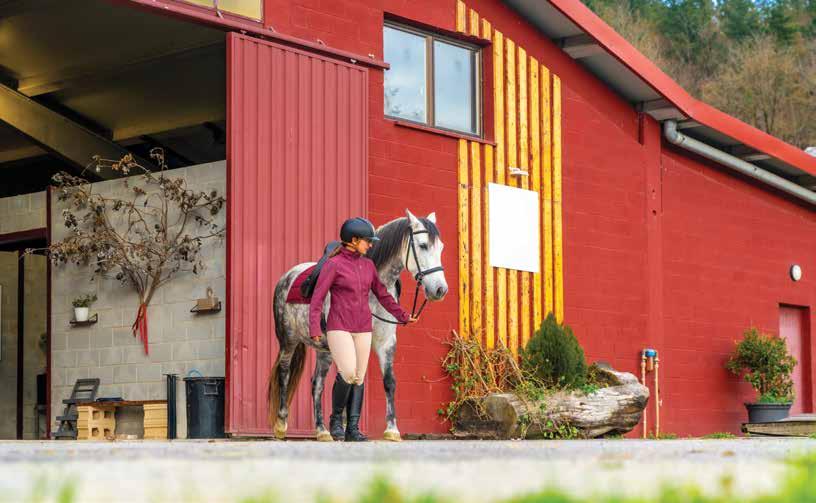
By Ashlee Pigford
To many clients and riders, an equestrian center looks like a dream: horses in well-maintained pastures, freshly dragged arenas, smooth gravel driveways, tidy barns, and peaceful riding spaces. But behind the scenes, these tranquil environments are the result of daily coordination, long-term planning, and non-stop problem solving that few see, and even fewer fully understand.
Whether you’re a client, a boarder, someone considering opening your own facility, or already running one and feeling overwhelmed, it’s critical to understand just how complex, and costly, it is to maintain a horse farm. This article aims to set realistic expectations and educate everyone who interacts with equestrian properties about the ongoing effort and investment behind the scenes.
The Day-to-Day Demands (and Surprises)
Running a barn involves managing buildings, equipment, land, and animals, all of which are subject to wear, weather, and age. Horses are hard on fences, stall doors, gates, and everything in between. Mud, flooding, and hoof traffic beat down arenas and driveways faster than most realize. Water lines freeze and burst. Roofs leak. Equipment breaks down in the middle of critical chores. Enter the essential support system: vendors.
Village It Takes: Critical Vendors and Services
To keep everything running, barn owners must develop ongoing relationships with a long list of service providers:
• Electricians – for lighting, outlets, fans, water heaters, and automatic waterers.
• Plumbers – for stalls, wash racks, bathrooms, and frost proof hydrants.
• Roofers – especially after storms or long term leaks.
• Handymen and welders – for gates, doors, stall repairs, and fencing patches.
• Machine operators – with skid steers or tractors for arena grading, driveway repair, and land reshaping.
• Fencing and gate installers – for safety, boundaries, and security systems.
• Trailer mechanics – for keeping transport legal and safe.
• Small engine mechanics – for mowers, ATVs, UTVs, and tractors.
• Sprinkler system technicians – for arena dust control or pasture irrigation.
• Pest control experts – for wasps, fire ants, rats, and termites.
• Manure management services – for haul off, composting, and spreading.
• Grounds maintenance crews – for weed eating, mowing, and tree clearing.
• Agricultural service providers – for soil testing, liming, weed control, overseeding, and pasture fertilizers.
Modern farms are now integrating agricultural drone services to monitor pasture health, map land drainage, and apply fertilizer or seed precisely. These drones can detect dry patches, compacted soil, and areas in need of reseeding before the human eye notices, saving time and money in the long run.
Smart tech systems are also helping farms track equipment maintenance, monitor barn temperatures, and control lighting or security cameras remotely. While these solutions carry upfront costs, they reduce long term expenses and can be game changers for large properties or those run by minimal staff.
Facility clients, whether they take weekly lessons or pay full board, often underestimate the cost of maintaining the space they enjoy. But it’s not just about hay and shavings. Every broken gate latch, leaky pipe, and flooded arena comes with a cost. Those costs must be passed on through service fees for the barn to survive.
When a boarding facility raises its rates, it’s usually in response to real world costs, not greed. Many barns operate on razor thin margins, and even modest boarding prices rarely reflect the actual labor and money going into the space.
Clients have every right to expect safety and professionalism, but it’s equally fair for facilities to expect understanding about what it takes to deliver that standard daily.
For those frustrated by rising rates or unavailable amenities, the alternative is ownership: purchasing your own land, handling these complexities yourself, and investing directly in your own infrastructure. For some, that’s the right next step, but it comes with more responsibility than many anticipate.
If you’re managing your own facility and feel like the surprises never stop, you’re not wrong. Equipment fails, workers don’t show up, and vendors raise rates. It’s a lot to handle.
We want to hear from you. What are your biggest maintenance challenges right now? Is it staffing, equipment, pasture management, or rising supply costs? Let us know, and we’ll use your insights to create future content
and support.
Favorite Vendors
We’re compiling a directory of trusted vendors and service providers that equestrian facility owners across the country can turn to. Whether it’s a welder who understands stall doors or a roofer who knows barn layouts, we want to include them.
Who do you trust and rely on for your farm services? Let us know. Your go-to small engine repair shop or fencing crew might be exactly what another barn owner is searching for.
There is much more to running a barn than feeding horses and dragging arenas. It’s about managing a multiacre operation with systems that overlap, break down, and cost money. The work is never-ending, and most of it happens out of sight.
By educating clients, setting realistic expectations, and supporting fellow farm managers, we can create a stronger, more transparent equestrian community, one that values the effort it takes to make every ride possible.
We’d love to hear from you:
• Who are your go-to vendors and service pros?
• What maintenance challenges are hitting you hardest this season?
• What do you wish lesson clients or boarders better understood?
Let’s keep the conversation going and help each other stay in the saddle.



By Sharlee Shumpert
Every season brings its own set of challenges and threats to livestock. In summer, this not only includes allergies and scorching temperatures but also a variety of creatures that can be troublesome for equine friends and their grazing grounds. Insects, snakes, armadillos, opossums, and even coyotes and wild boars can pose serious dangers—or simply be nuisances—for horses and their owners. So, what can be done to defend pastures from these pests?
There is no shortage of insects to contend with. Horse owners everywhere know the struggle of dealing with biting pests such as ticks, horseflies, and mosquitoes. Additionally, insects like armyworms can harm horses indirectly by decimating pastureland. Thankfully, there are plenty of preventive measures available.
Mowing and clearing dark or cluttered spaces in the pasture can help control ticks, while acaricides can be applied to tick-infested animals. Horseflies and mosquitoes can be managed by destroying their breeding grounds, which are often in wet areas, and properly using larvicides.
Armyworms, which are more active in late summer and autumn, can be addressed through mowing and insecticides. It is crucial to check pastures frequently for armyworms. According to the UGA Cooperative Extension article “Check Pastures and Hayfields for Fall Armyworms,” five armyworms per square foot in a pasture signal the need for action.
Venomous snakes are particularly concerning summer pests. Copperheads, rattlesnakes, and water moccasins are three of the most common venomous snakes during the summer and are extremely hazardous to both horses and humans.
Keeping pastures mown is an excellent preventive measure, as it reduces the spaces snakes have to hide and decreases their prey. Repellents and barriers can also help reduce snake numbers.
It’s important to note that many nonvenomous snakes, such as garter snakes and grass snakes, are not a major threat to horses or humans and should be left alone. Most snakes, even venomous ones, will not attack unless disturbed. However, when a pasture has a large population of venomous snakes, it’s a good idea to manage them to protect your horses.
Most prevalent in the summertime, armadillos burrow and dig for food, often leaving holes and ruts in pastures. While they don’t pose a direct threat to horses, they serve as intermediate hosts for the parasite responsible for Equine Protozoal Myeloencephalitis (EPM). Armadillos are prey for opossums, and an infected armadillo passes on the parasite when consumed by an opossum.
Preventing armadillos can be accomplished with fencing and by clearing areas with undergrowth. Unfortunately, in some cases, trapping or shooting may be necessary to remove these creatures. Owners using these methods must be familiar with
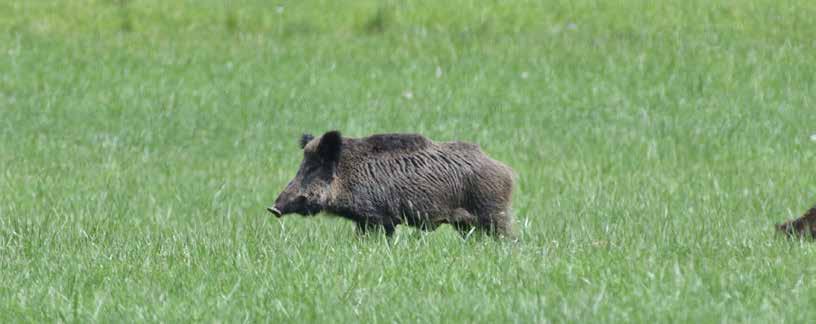
state and county firearms, hunting, and trapping laws, as these activities are highly regulated.
Opossums, while present year-round, are most commonly seen during the warmer months. These mammals are notorious in the horse world for transmitting equine protozoal myeloencephalitis (EPM), a neurological disease. This makes opossums a significant pest to have in pastures, and they should be dealt with quickly to prevent the risk of infection to nearby horses.
Fences and scent repellents are helpful tools for deterring opossums. Removing undergrowth and junk piles can also discourage their activity. Avoid leaving garbage cans open or pet food outside, particularly near barns or pastures, as this can attract other unwanted visitors such as mice and armadillos. Trapping and shooting are effective population control methods, but the legality of these actions varies and must be verified.
For horse owners, opossums are among the most concerning pests due to the severe damage EPM can cause if left untreated.
Coyotes and Wild Boars
Summer tends to be a more active season for wild boars than coyotes, but both animals pose risks to horses. They can cause harm by directly attacking horses or by spooking them, leading to


potentially serious injuries from reckless fleeing. Wild boars can be managed with defensive barriers and may be deterred using sound or smell repellents. However, they are resilient pests, and trapping or shooting may be necessary for effective control. For coyotes, prevention involves burying the carcasses of livestock or other animals that die in the pasture to avoid attracting scavengers. Installing specialized fencing designed specifically to keep coyotes out is also recommended, as basic pasture fences are generally ineffective. Audio and visual repellents, as well as guard animals, provide additional protection. Trapping and shooting can also be considered, but it is crucial to act within legal guidelines and ensure humane practices.
While coyote and wild boar attacks are relatively uncommon, they remain a potential threat to watch out for.
Whatever pests you may encounter this summer, it’s essential to use legal and ethical prevention and removal strategies. The animals and insects that share the pasture with our horses can be both annoying and dangerous, but addressing them responsibly allows us to protect our horses while considering the wellbeing of all creatures.
By Kyla Szemplinski, MS, UT TSU Shelby County Extension
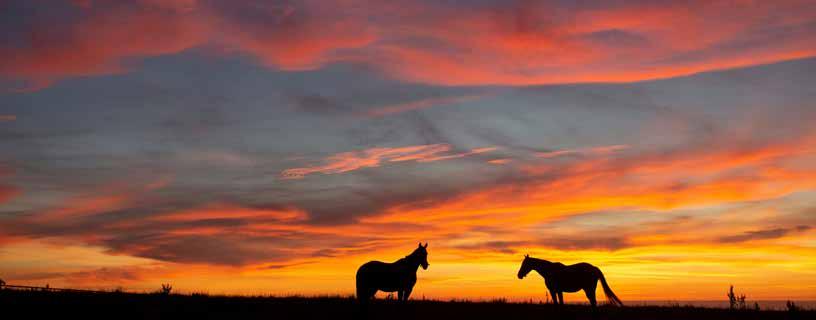
Summer nights bring an undeniable thrill for horse owners, offering unforgettable experiences under the stars. Shows can include post-show BBQs, pool parties, and even “Twilight” shows to beat the heat. Summer nights can shift schedules for horses, marking the perfect time for pasture turnout. Nighttime grazing offers benefits for horses and owners. It allows more natural behavior patterns, it can reduce stress, and allow horses to graze during cooler hours. There are multiple reasons owners transition to nighttime turnout when temperatures begin to rise. However, it is not as simple as just flipping the switch from day to night in the course of a day.
Transitioning schedules intentionally
One potential downfall to nighttime turn out is a possibility of injuries or illnesses that will not be discovered until morning. Before transitioning to nighttime turnout, consider the following precautions.
Consider Herd Dynamics: Horses that have spent significant time together as a herd typically adapt smoothly to a change from day to night turnout. However, if you introduce a new horse during the summer, it’s important to ensure a gradual and stress-free transition. Allow the new horse to bond with one or two members of the herd before their first night turnout. To monitor the adjustment, initially turn out the new horse during daylight hours, providing the opportunity to observe their integration into the group.
Visible Fences: While horses have excellent night vision, it’s still important to ensure your fences remain clearly visible after dark. An easy solution is to attach reflective tape or tie strips of surveyor’s tape at regular intervals along the fence line.
Border Roads: Horses can occasionally find gaps in the fence to slip through. This can be especially dangerous if your pasture borders a road, as escapes during the night, when you are not present or asleep, can lead to serious accidents. To prevent this, consider relocating to a pasture that doesn’t border a road or investing in a double fence line for added security. Additionally, ensure that the last person leaving the farm double-checks and secures all entrance gates.
Horse’s Weight: Horses often spend more time grazing at night than during the day, which can contribute to weight gain and increase the risk of laminitis. If your horse has a history of weight-related issues or laminitis, consider using a grazing muzzle or providing access to a dry lot to limit their intake. Additionally, monitor your horse’s weight and
Nighttime grazing can be safe and successful when proper management steps are taken. Once you have ensured that your property is secure for nighttime grazing and addressed any herd dynamics, there are several tips to help your horses. Generously apply fly repellent before putting horses out, as mosquitoes are more active at night. Practice a rotational grazing program to prevent overgrazing, which encourages weed growth. Switch pastures once the grass is grazed down to 3-4 inches to allow it to regrow. Ensure all water sources are clean and filled before leaving the barn for the day. Finally, double-check all pasture gates to make sure they are latched properly, especially the barn entrance gate leading to a public road.
Here’s a tip many horse owners might not be aware of: the levels of non-structural carbohydrates (NSC) in pasture grasses can fluctuate throughout the day. NSCs are easily digested and absorbed in a horse’s digestive system, and consuming them in large quantities can contribute to issues like weight gain, insulin resistance, or Cushing’s disease. This makes timing your horse’s turnout crucial if you’re managing their weight or metabolic health.
Research from Rutgers University (Weinert-Nelson, Dolan & Williams, 2022) reveals that NSC levels are highest in grasses during the late afternoon and early evening (approximately 4 PM to 8 PM). This is due to sugar accumulation in the plants throughout the day. Conversely, the lowest NSC levels occur in the early morning hours (4 AM to 8 AM) when plants have used up their sugar stores for growth and other processes during the night.
By strategically planning turnout times, you can help reduce your horse’s exposure to high-NSC forage and better manage their health.
When transitioning to nighttime turnout, it is important to assess the specific needs of your horses and your facility. Ensure that fencing is secure, water sources are accessible, and any potential hazards are addressed. Regular monitoring and gradual adjustments can help support a smooth transition. By taking these steps, owners can create a safe and effective turnout routine that aligns with their horses’ needs and environment throughout the summer months.
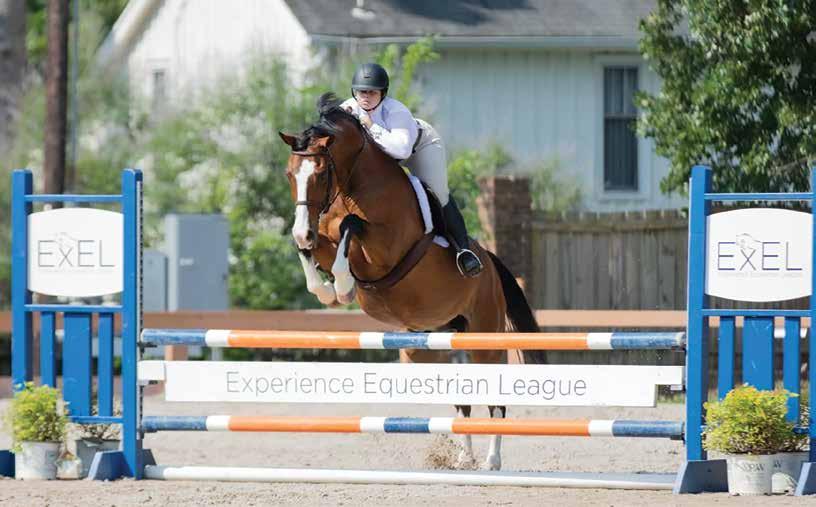
Navigating College Equestrian Teams, Equine Majors, and Career Paths
Section by Lauren Abbott
Equestrian enthusiasts, young riders, trainers, and horse owners—this is your hub for insights and opportunities in competitive and educational equestrian pursuits. Whether you’re a high school student dreaming of collegiate competition, a trainer guiding riders to success, or a parent navigating the complexities of equestrian education, we’ve got you covered.
The upcoming ExEL College Combine, taking place from June 18–22, 2025, provides a valuable opportunity to learn about collegiate equestrian programs. This educational event is designed for riders, parents, and trainers, offering insights into the pathways and opportunities available within collegiate equestrian sports. Here’s what participants can expect to learn during this informative experience.
• Recruitment Opportunities: Riders of all skill levels—from beginner to Big Eq—can showcase their talents and connect with Division I, II, and III programs, as well as IHSA, IDA, and USEA schools. Middle schoolers are welcome to attend as observers; limited participation is available for eighth-graders.
• Pathways to Collegiate Riding Conference (June 18): Hear from guest speakers like Piper Klemm and Randi Heathman, who will offer expert in-
sights into collegiate equestrian programs.
• Collegiate Fair (June 19–22): Meet one-onone with collegiate coaches and administrators for personalized guidance.
• Showcase Clinic (June 19): Riders can join a two-phase clinic (flat and fences) evaluated by collegiate coaches.
• Horsemanship Quiz Bowl (June 20): A fun way to test your equine knowledge and win prizes.
• ACT Prep (June 20): Get academic support to help young athletes balance school and riding.
• Collegiate Show Observation (June 20–22): Coaches will evaluate riders during their ExEL Show classes, observing talent in action.
If you’re interested in riding at the collegiate level or want to learn more about collegiate equestrian programs, this event offers valuable insights.
For details and registration, visit: https://www.exelshows.com. Special
Top
at an Equestrian Collegiate Fair
Get tips on best questions to ask college administrators and coaches to help stand out as a recruit, and what makes successful college riders unique. Find the best equestrian program fit for your goals!
Exploring Education and Career Pathways in the U.S. Equine Industry
Discover the diverse academic and career options in the equine industry, from professional programs to career tracks beyond riding.
• What is your team’s overall philosophy and approach to training and competition?
• How do you evaluate riders during a combine, and what specific skills or qualities do you focus on?
• Do you recruit equestrians of all skill levels, including beginner riders?
• Can you explain the differences between NCEA, IHSA, IDA, and USEA programs and how they operate?
• What distinguishes your school’s equestrian program from others in the region or division?
• How do you integrate new riders into your team, both from a training and cultural perspective?
• What are the key qualities you look for in equestrian recruits?
• Do you offer scholarships for student-athletes on the equestrian team?
• What is the typical recruitment process, and how long does it take?
• What disciplines do you specifically recruit for?
• Are there opportunities to participate in equestrian-related activities if a student isn’t interested in competing?
• What equine-focused majors or programs does your school offer?
• Are there internships or partnerships available with equine industry professionals?
• How does the school support students pursuing equine-specific careers, both during and after college?
• What academic and training resources are available to student-athletes pursuing veterinary or animal science degrees?
Bridging the Gap from High School to Collegiate Equestrian Teams
Explore comprehensive resources on collegiate equestrian programs, including IHSA, NCEA, and intercollegiate eventing. Learn about opportunities, teams, and competitions for student riders.
NCEA and NIL for Collegiate Equestrians
Providing an overview of NIL rules and guidelines for collegiate equestrian athletes, including insights from the official NCAA Collegiate Equestrian NIL Guidance provided by USEF, to help athletes maintain eligibility and explore future opportunities.

• Can you describe the team culture and the type of environment created for student-athletes?
• How do you balance academics and athletics for equestrian team members?
• Are there opportunities for leadership development or mentoring within the team?
• How often does the team travel for competitions, and how do you support the logistics of travel and academics?
• What kind of support systems (e.g., counseling, academic services, athletic training) are available for students?
• If I’m not pursuing collegiate competition, what other equestrian-related opportunities does your school offer?
• Are there riding classes, clubs, or facilities for students who love horses but aren’t interested in competing?
• What career paths do equine studies graduates commonly pursue beyond competition (like training, management, or equine business)?
• What excites you most about coaching collegiate equestrian athletes?
• What advice would you give to middle or high school riders aspiring to compete in college?
• How can I tailor my resume or application to stand out as a prospective equestrian recruit?
• What do you think sets successful college riders apart from others?
These questions will help provide a well-rounded understanding of a college’s equestrian program, helping you find the best fit for your goals inside and outside the arena.
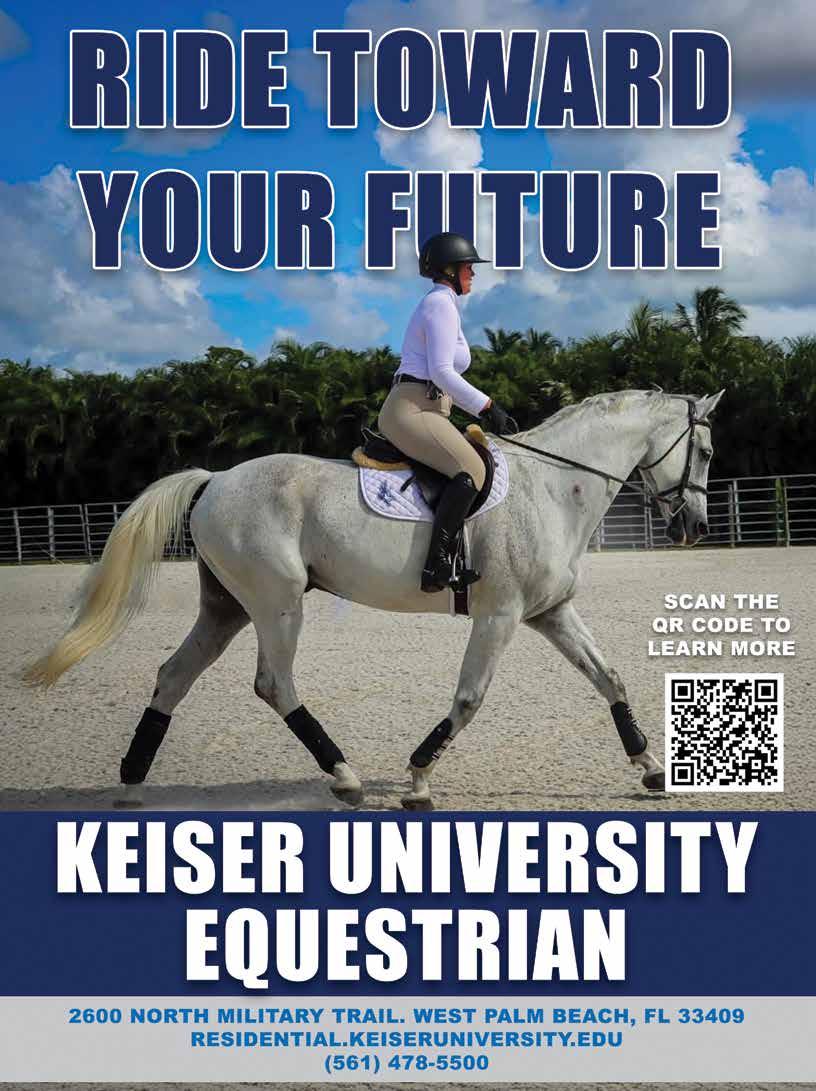

Special Spotlight: Navigating College Equestrian Teams, Equine Majors, and Career Paths
Are you passionate about horses and considering a career in the equine industry? The equine world offers a variety of fulfilling job opportunities, from caring for animals to innovating in business or research. Whether you’re a college student exploring majors, a horse enthusiast ready to turn your passion into a career, or someone seeking a new professional pathway, this article will guide you through popular equine-focused college majors and exciting career options.
Equine-Related College Majors
A career in the equine industry often starts with the right education. Many colleges and universities offer programs under Agriculture, Animal Science, or Veterinary departments, giving students a foundation in both equine care and industry-specific knowledge. Here are some of the most popular majors for aspiring equine professionals:
1. Equine Science
Focus: The biology and care of horses, including physiology, reproduction, health, behavior, and nutrition.
Best for: Aspiring equine veterinarians, researchers, or nutritionists.
2. Equine Studies / Equine Management
Focus: A broad overview of horse care, training, stable and farm management, combined with the business aspects of the equine industry.
Best for: Individuals aiming for careers in barn management, horse training, or equine entrepreneurship.
3. Equestrian Studies
Focus: Developing riding techniques, training horses, teaching riding, and excelling in equestrian showmanship.
Best for: Those pursuing careers as riding instructors, trainers, or competitive riders.
4. Animal Science (Equine Focus)
Focus: A broader degree in animal science with equine specialization courses.
Best for: Students planning careers in research, graduate studies, or veterinary school.
5. Veterinary Medicine (DVM)
Focus: This professional degree focuses on equine health, surgery, and medical care. Students typically start with pre-vet or animal science undergrad programs before pursuing veterinary school.
Best for: Aspiring equine veterinarians.
Careers in the Equine Industry
The equine world is diverse, offering roles that combine hands-on interaction with horses, business management, and creative opportunities. Here’s an overview of career pathways broken down by industry focus:
Hands-On Careers
• Equine Veterinarian: Provide medical care for horses (requires a DVM).
• Farrier: Specialize in hoof care and shoeing.
• Riding Instructor: Teach disciplines like dressage, hunter/jumper, or western riding.
• Equine Massage Therapist: Focus on performance and rehabilitation.
• Equine Facility Manager: Oversee barn operations and boarding facilities.
• Event Manager: Plan and coordinate horse shows and competitions.
• Bloodstock Agent: Work in sport horse specific breeding and sales.
• Equestrian Journalist: Write for magazines or seek a career as Communications or Marketing Manager for major equine brands that create content, press releases, or mass media
• Equine Photographer: Capture competition or lifestyle imagery.
• Social Media Manager: Create and promote content for equine brands or events.
• Art and Design: Specialize in equestrian art, design, fashion and decor.
• Breeding Manager: Manage stallion, mare, and foal care.
• Jockey or Exercise Rider: Ride racehorses during competition or training.
• Therapeutic Riding Instructor: Teach individuals with disabilities through equestrian activities (PATH Intl. certification often required).
• Equine-Assisted Therapy Practitioner: Work in mental health therapy supported by equine interaction.
• Equine Nutritionist: Develop horse diets (often requiring an MS or PhD).
• Equine Genetics Researcher: Study hereditary traits and diseases.
• University Professor: Teach equine courses within agriculture or veterinary programs.
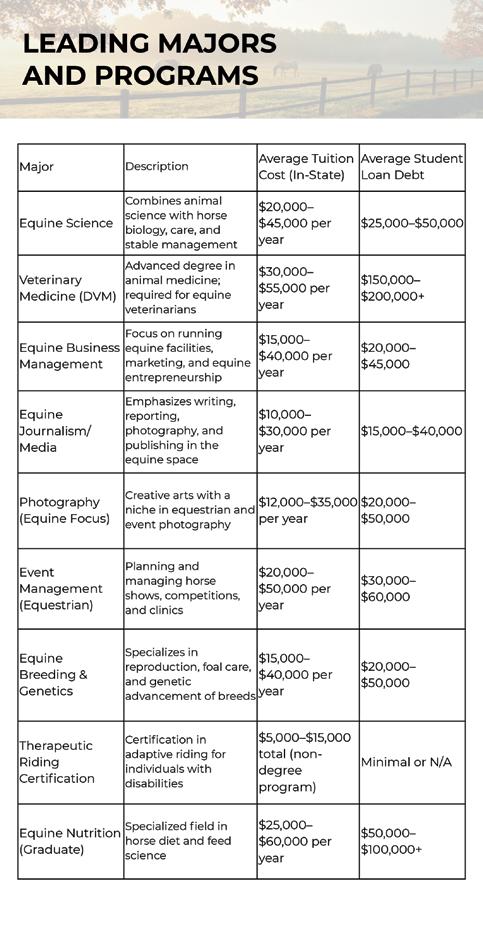
*It is important to note that tuition costs and loan debts can vary significantly based on the institution, residency status, scholarships, financial aid, and the specific path chosen within these majors or careers. Prospective students should carefully research and plan financially to pursue their desired career in the equine field.

geographic location, credentials, industry or employer and overall job tasks.
The equine industry is evolving to meet new challenges and opportunities. Here are some exciting trends shaping its future:
• Equine Rehab & Wellness: Incorporating innovations like underwater treadmills or laser therapy.
• Sports Psychology for Equestrians: Supporting performance through mental health strategies.
• Sustainable Farm Management: Focusing on eco-friendly practices.
• Digital Marketing in the Equine World: Leveraging social media and influencer partnerships.
• Equine Entrepreneurship: Launching boutique tack shops or custom product lines.
Many roles in the equine field benefit from industry-recognized certifications. These include:
• Certified Horsemanship Association (CHA): For riding instructors and trainers.
• PATH Intl. Certification: For therapeutic riding professionals.
• Farrier Schools: Such as the Kentucky Horseshoeing School.
• Equinology Certification: For equine massage therapists.
Getting involved in equine-related extracurricular programs during middle or high school can provide valuable handson experience and networking opportunities, laying a strong foundation for future college majors and equine careers. Consider these excellent platforms: 4-H Horse Program: Offers educational resources, competitions, and hands-on learning experi-
ences focused on horse care and riding.
FFA – Future Farmers of America (Equine Pathway): Prepares students for careers in the equine industry through leadership opportunities and equine-focused programs.
United States Pony Clubs (USPC): Provides structured programs in horsemanship, competition, and leadership development.
Interscholastic Equestrian Association (IEA): Enables school-age riders to compete in equestrian sports without needing to own a horse.
National High School Rodeo Association (NHSRA): Promotes skill development and competition in rodeo events for high school students.
PATH Intl. Youth Volunteer Programs: Offers opportunities to engage with therapeutic riding centers and gain insights into equine-assisted activities.
AQHYA – American Quarter Horse Youth Association: Focuses on youth development through education, competitions, and networking in the Quarter Horse industry.
Arabian Horse Youth Association (AHYA): Combines scholarship opportunities, events, and leadership programs centered around Arabian horses.
National Reining Horse Youth Association (NRHyA): Encourages participation in reining, with programs emphasizing education, leadership, and competition.
USHJA Outreach Program (Hunter/Jumper Youth Development): Offers young riders access to hunter/jumper competition opportunities with an emphasis on skill-building and sportsmanship.
By participating in these programs, students can gain valuable insights into the equine world while developing skills that will support their future academic and professional aspirations.
The equine industry is an exciting and rewarding space with opportunities for professionals across various disciplines. If you’re ready to take the reins on your career, start by exploring college programs, certifications, or internships aligned with your goals. Who knows? Your passion for horses might just pave the way for the career of your dreams.

Special Spotlight: Navigating College Equestrian Teams, Equine Majors, and Career Paths
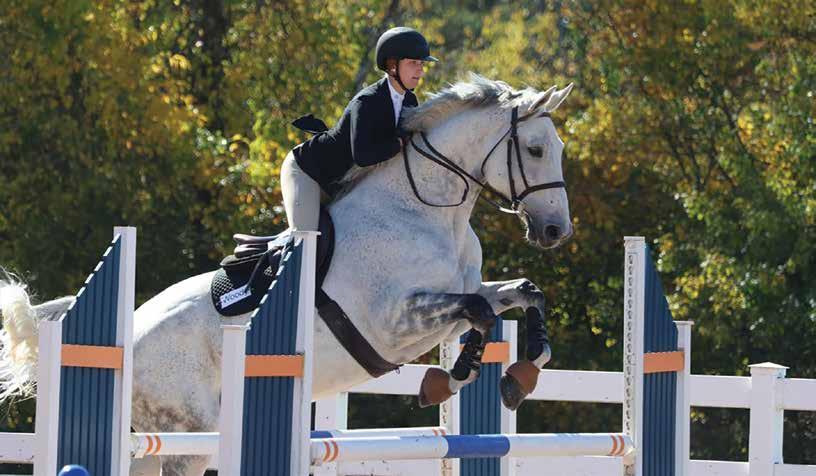
Making the leap from being a high school equestrian to riding on a collegiate equestrian team can be both exciting and overwhelming. The opportunities are vast, and choosing the right path requires a blend of preparation, research, and passion for the sport. This guide breaks down what high school equestrian athletes can expect, offering insights to help prospective collegiate riders succeed.
Understanding Collegiate Equestrian Teams
Collegiate equestrian is a structured and competitive environment that offers riders the opportunity to represent their school at regional and national levels. Teams fall into distinct organizations and divisions, each offering unique experiences and challenges.
Key Collegiate Equestrian Organizations:
• NCEA (National Collegiate Equestrian Association): Focuses on varsity programs with scholarship opportunities. Teams compete in dual disciplines and follow NCAA regulations.
• IHSA (Intercollegiate Horse Shows Association): Allows riders of all experience levels to compete, including walk-trot through advanced levels.
• IDA (Intercollegiate Dressage Association): Offers dressage-focused competitions for riders from Introductory through First Level.
• USEA (United States Eventing Association): Supports intercollegiate eventing teams
for students passionate about cross-country, stadium jumping, and dressage.
These organizations cater to various levels of expertise, making it possible for both highly skilled riders and those newer to the sport to find a team that aligns with their goals.
Starting your preparation early in high school is key to standing out in the competitive world of collegiate equestrian. Here’s how to set yourself up for success:
1. Research Programs
Start by understanding the differences between varsity (NCEA) and club-level (IHSA, IDA, USEA) teams. Review school websites to identify programs that align with your goals and resources. Look into the coaching staff, facilities, and the team’s performance history.
2. Attend Competitions or Camps
If possible, attend collegiate competitions or summer riding camps hosted by schools. This gives you a first-hand view of competition formats, team dynamics, and the intensity of training at the collegiate level.
3. Register with the NCAA Eligibility Center
For riders aiming for varsity teams (NCEA), registering with the NCAA Eligibility Center is essential. This ensures you meet the academic and amateurism standards required for recruitment.
4. Create a Strong Riding Resume
Your riding resume should highlight your experience, accomplishments, and versatility. Include:
• Year-end awards
• Competition highlights
• Riding video links showcasing multiple horses, various disciplines, or competition styles
• Your trainer’s information for references
• A short cover letter expressing your interest in specific programs
5. Reach Out to Coaches
Starting June 15th after your sophomore year, you can begin contacting NCAA coaches. Send emails introducing yourself, along with your resume and riding videos. Be proactive and persistent, as coaches often appreciate candidates who show genuine interest and commitment.
6. Keep Your Grades Up
Strong academics are essential for eligibility and scholarships. Take the PSAT, SAT, or ACT early, and maintain a GPA that meets your target schools’ requirements. Coaches often look for well-rounded student-athletes.
Differences Between Divisions and Organizations
Understanding the structure of collegiate equestrian programs is vital when narrowing down your options. Here’s a breakdown of the main divisions:
I, II, and III Teams (NCEA)
• Division I: Offers the most competitive environment with the largest schools and more scholarship funding.
• Division II: Smaller than Division I programs but still offer scholarships and competitive opportunities.
• Division III: Does not provide athletic scholarships but focuses heavily on balancing academics and athletics.
• Suitable for students at all skill levels, including beginners.
• Riders compete on unfamiliar horses provided by the host school, leveling the playing field and testing adaptability.
• IDA: Dressage-focused riders compete in USDF introductory to first-level tests.
• USEA: Caters to eventing enthusiasts, combining dressage, show jumping, and cross-country at intercollegiate competitions.
Daily Life: Riding at the collegiate level requires dedication and time management. You’ll need to balance early mornings at the barn with academic classes, team training sessions, and competitions. Strong organizational skills and a support system are crucial.
Participating in a team sport means fostering camaraderie and collaboration. Unlike high school, collegiate teams teach riders how to collectively work toward success, emphasizing sportsmanship and community.
Formats vary based on the organization. For example, IHSA events involve draw-based horse assignments, testing your adaptability as you ride unfamiliar mounts in the competition ring.
While Division I and II schools may offer athletic scholarships, not all collegiate equestrian opportunities come with financial aid. However, academic scholarships or grants might be available, so maintaining strong grades is always beneficial.
Developing strong relationships with coaches is just as important as your riding abilities. Here’s how to foster positive connections:
• Be respectful and professional in all communications.
• Update coaches on your progress regularly, including competition results and training improvements.
• Visit campuses and meet with coaches during official (or unofficial) visits to get a better feel for the team culture.
Riding for a collegiate equestrian team combines opportunities for personal growth with academic development. Whether you’re aiming for an NCAA varsity team or an IHSA club, preparation, research, and dedication are key steps in the process.
1. “NCEA Collegiate Equestrian Information.” National Collegiate Equestrian Association, https://collegiateequestrian.com/spor ts/2019/4/3/_131987884466648463.aspx.
2. “Intercollegiate Horse Shows Association (IHSA).” IHSA, https://www.ihsainc.com.
3. “Team Dressage Collegiate Programs.” Team Dressage, https://teamdressage.com.
4. “USEA Intercollegiate Eventing Program.” United States Eventing Association, https:// useventing.com/events-competitions/ intercollegiate-eventing-program/intercollegiate-eventing-program-list.
5. “NCEA Homepage.” National Collegiate Equestrian Association, https://collegiateequestrian.com.
Special Spotlight: Navigating College Equestrian Teams, Equine Majors, and Career Paths

Navigating the world of collegiate equestrian sports while ensuring compliance with name, image, and likeness (NIL) guidelines can be complex. This guide breaks down what NIL means for NCEA athletes versus amateur equestrians, what revenue streams are allowed, and why these rules matter.
What is NIL?
NIL stands for “Name, Image, and Likeness.” It refers to a student-athlete’s ability to earn compensation for the use of these personal attributes under NCAA rules. Unlike previous policies that prohibited athletes from profiting off their personal brand, the U.S. Supreme Court’s ruling and subsequent NCAA adoption of NIL legislation have created new opportunities for athletes to receive revenue.
For NCEA equestrians, NIL means they can be compensated through sponsorships, endorsements, social media, and branded merchandise, provided they follow specific rules that preserve their eligibility.
NIL for NCEA Athletes vs. Other Collegiate Sports
While NIL rules apply broadly to all NCAA athletes, collegiate equestrians face unique consid-
erations due to their status within the United States Equestrian Federation (USEF). USEF’s amateur rules operate alongside NCAA NIL guidelines, adding another layer of compliance.
Whereas most collegiate athletes only need to follow the NCAA rules, NCEA equestrians must ensure their NIL activities also comply with USEF amateur guidelines to retain their amateur status. Amateur status is crucial for participating in non-NCAA competitions, where many collegiate equestrians compete during the offseason.
Revenue NCEA Athletes Can Accept
NCEA athletes can pursue several legitimate revenue streams under NIL, including: • Sponsorships and Endorsements: Athletes can work with brands to promote prod-
ucts or services, whether through social media or traditional marketing campaigns.
• Social Media Influence: Equestrian athletes can partner with brands by leveraging their personal following on platforms like Instagram, TikTok, and YouTube.
• Selling Merchandise: Athletes can sell merchandise featuring their name or likeness, such as clothing, posters, or digital products.
• Host Clinics or Training Services: Providing equestrian-related lessons, clinics, or other services in connection with their name is allowed under the NIL policy. It is important to remember that these actions must also align with USEF amateur rules (explained further below).
What NCEA Athletes Cannot Do (USEF Amateur Status Rules)
To retain their amateur status under USEF while earning NIL revenue, NCEA athletes must avoid violating USEF’s regulations. Here are key restrictions to keep in mind:
1. No Payment for Competing: Athletes cannot receive compensation for actual equestrian competition performance. Payment based on sponsorship or content unrelated to results is acceptable.
2. Team Membership Requirement: To maintain amateur status, athletes must remain on their NCEA team roster and comply with the NCAA’s interim policy.
3. School Compliance is Key: Athletes must thoroughly consult their school’s compliance department about specific NIL activities being considered.
4. Proof of NCAA Eligibility: When competing in non-NCAA events, athletes must provide proof of NCAA eligibility, such as a letter from their school’s compliance department. Violating these restrictions could jeopardize both amateur and NCAA eligibility, impacting an equestrian’s ability to compete in future events.
How NCEA Equestrians Differ from Amateur Riders Outside College
Amateur equestrians not competing in NCEA follow only USEF amateur rules. This primarily means they cannot receive compensation tied to their equestrian activities, except for very specific circumstances outlined by USEF (e.g., judging).
Conversely, NCEA athletes can monetize their NIL under the NCAA’s policies, provided they remain on their team and do not breach USEF amateur rules. For collegiate equestrians, NIL presents a unique opportunity to develop their personal brand while still par-
ticipating in both NCAA and amateur competitions. Why NIL Rules for NCEA Equestrians Matter NIL policies are more than just an opportunity for athletes to capitalize on their brands; they reflect broader changes in collegiate sports and how amateur athletes are perceived. For NCEA athletes, these rules matter because they allow each individual to build their personal brand, explore professional opportunities, and gain financial support throughout their athletic careers. However, strict adherence to both NCAA and USEF regulations is critical—not just for maintaining eligibility, but also for ensuring equestrian sports remain accessible and fair for all competitors.
Collegiate equestrians navigating NIL must strike a balance between leveraging their personal brand and ensuring compliance with NCAA and USEF guidelines. Here are the most important steps to take if your goal is to become an NCEA athlete considering NIL activities:
• Consult the school’s compliance department before pursuing NIL opportunities.
• Familiarize yourself with USEF amateur guidelines to avoid accidental breaches.
• Ensure your NIL activities are separate from competition performance and payment for rides.
• Retain proof of eligibility when competing in non-NCAA events.
NIL is an exciting new frontier for collegiate athletes, but it comes with responsibilities, particularly for NCEA equestrians. Understanding and respecting these rules will not only help preserve your eligibility but also pave the way for future opportunities.
For a complete review of USEF guidelines related to NIL, read the official NCAA Collegiate Equestrian NIL Guidance found by scanning this QR code.
^This article is based on information available in the NCAA Collegiate Equestrian NIL Guidance provided by USEF: https://www.usef.org/forms-pubs/jc-IRhnBoM4
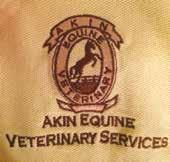









Boarding at beautiful WHITE OAK FARM: Located on 40 acres in northeast Shelby County at 10023 Rosemark Rd. Full Board $500/ month. Board includes stall cleaning/shavings and morning/evening feedings.
Numerous amenities include large stalls with windows, stall fans, heated waterers, turnout pastures, lighted outdoor arena or inside barn riding, crosstie area with hot/cold wash rack, fly spray system, Bermuda hay grown and baled onsite. Gated facility with owners and farm manager living on property. Call Sammy 901-833-3075.
Seeking an experienced intermediate/ advanced english or western working student or farm worker to help out with horses in Eads, TN. This includes cleaning stalls, feeding, hay, turnout, grooming, etc. Must be experienced horse handler. Will consider board on your own horse or supervised rides/ coaching/showing on one of our awesome farm horses if a good fit. Morning shifts available several days during the week.
Resumes required for consideration. Please email: happymemphishorses@gmail. com.
Tack Sale - Quality Close Contact Saddles
Calling all equestrians! Upgrade your ride with these amazing close contact saddles for sale:
Ovation Palermo Saddle
• 17” seat, Regular flap
• Interchangeable tree widths (N, M, MW)
• Features include XCH Interchangeable Gullet System, Bayflex panels, triangle knee rolls, and thigh blocks.
• Condition: Like new with superior comfort and a “ready-to-ride” feel.
• Price: $950
Stubben 17.5 Siegfried CS Saddle
• 17.5” seat, 31 cm tree (MW Tree)
• Classic and durable, with plenty of life left for serious riders.
• Serial number available upon request.
• Price: $500
Text 901-279-4634 for more info & photos! TACK


